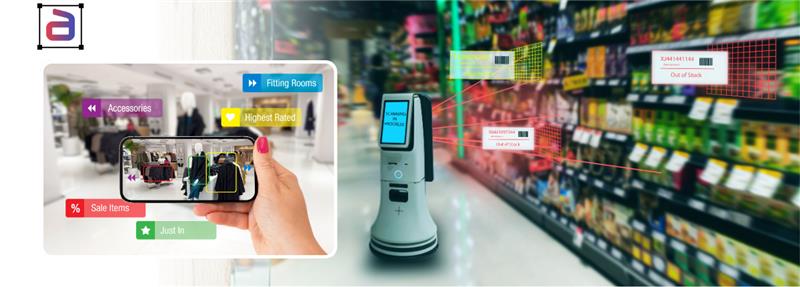In today’s customer-driven marketplace, businesses live and die by how well they understand their customers. Price and product matter, but emotions—how a customer feels about your brand—often determine whether they stay loyal or churn. Enter text annotation for sentiment analysis, the AI-powered ability to interpret customer emotions from text.
From product reviews and tweets to support tickets and surveys, sentiment analysis gives businesses a window into customer feelings at scale. But there’s a hidden hero behind it: text annotation. Without annotated datasets, sentiment analysis models would have no way of distinguishing “great service!” from “great, another late delivery.”
According to Gartner, companies that successfully use AI-driven sentiment analysis in customer service see up to a 20% increase in customer satisfaction scores, proving that decoding emotions isn’t just nice to have—it’s a business imperative.
“Customer emotions are the real currency of loyalty. Sentiment analysis helps brands measure it at scale.” — CX Analyst
What is Sentiment Analysis?
At its core, sentiment analysis uses natural language processing (NLP) and machine learning to determine the emotional tone behind a piece of text. It answers questions like:
- Was this review positive, negative, or neutral?
- Is this customer angry, happy, or frustrated?
- Which product feature triggered this emotion?
Examples include:
- A 5-star review saying “The camera quality is fantastic” (positive sentiment).
- A tweet reading “Thanks for canceling my flight again 🙄” (negative sentiment, sarcasm detected).
- A support ticket stating “Delivery was late, but customer service was helpful” (mixed sentiment by aspect).
Raw text is ambiguous. Only through annotation can AI models learn to decode tone, intent, and emotion accurately.
Why Text Annotation is Essential
Text annotation is the foundation of sentiment analysis. It involves labeling text with emotional categories so AI can learn patterns.
- Polarity Annotation: Classifies text as positive, negative, or neutral.
- Aspect-Based Annotation: Connects sentiment to specific features (e.g., “battery life is poor” → negative sentiment about battery).
- Emotion Annotation: Goes deeper to capture feelings like joy, anger, sadness, fear, or excitement.
- Sarcasm/Irony Annotation: Identifies when text means the opposite of its literal wording.
- Entity Annotation: Tags the target of sentiment (e.g., “The staff was rude” → negative sentiment about staff).
For example, the phrase “the service was sick” could mean negative in a hospital context but positive in slang. Annotation provides the nuance needed for models to understand such differences.
“AI can crunch numbers, but only annotation teaches it how to feel.” — NLP Researcher
Applications of Sentiment Analysis
- Customer Experience : Businesses use annotated text to identify unhappy customers early and intervene before churn. For example, banks monitor call transcripts to flag frustration, prompting supervisors to step in.
- Marketing & Brand Monitoring : Brands track public opinion by analyzing social media and news sentiment. Annotated datasets make it possible to detect shifts in brand reputation in real time.
- Product Development : Annotated reviews help companies identify pain points. If thousands of reviews mention “poor battery life,” product teams know where to focus.
- Contact Centers : Sentiment analysis provides agents with customer mood indicators, helping them adjust tone and approach. A frustrated customer might be routed to a senior agent for faster resolution.
- Social Media Monitoring : Companies monitor hashtags, mentions, and comments. Annotated sentiment data highlights viral complaints or positive trends, allowing brands to respond quickly.
Case Example: An airline used annotated tweets and support messages to train sentiment analysis models. By detecting frustration patterns early, they reduced customer churn by 15% in one year.
Challenges In Text Annotation For Sentiment Analysis
- Ambiguity: Words can mean different things depending on context. “Cold service” in a restaurant review is negative, but “cold storage” in logistics is neutral.
- Cultural & Linguistic Diversity: Slang, idioms, and regional phrases can confuse AI models without diverse annotations.
- Sarcasm & Humor: “Great, my package is lost again” is negative despite the positive word “great.”
- Subjectivity: Annotators may interpret the same text differently. QA and gold-standard datasets are critical.
- Emojis & Abbreviations: Sentiment is often conveyed through 😊, 🙄, or acronyms like “LOL.” Annotators must tag these correctly.
Human-in-the-Loop in Sentiment Analysis
Automation can speed up annotation, but human expertise is indispensable.
- Cultural Context: Humans understand regional slang, humor, and double meanings better than machines.
- Sarcasm Detection: Annotators can catch when text is ironic, ensuring training data reflects true sentiment.
- Continuous Feedback Loop: Annotators validate and refine AI outputs, feeding corrections back into the model for continuous improvement.
This Human-in-the-Loop (HITL) approach ensures annotated datasets are nuanced and reliable, especially in industries where customer emotions directly impact trust.
Industry Examples & Case Studies
- E-commerce: Annotated reviews power models that detect top customer complaints (e.g., “delivery delays” or “sizing issues”), enabling better supply chain planning.
- Banking: Sentiment analysis on chat and call transcripts identifies at-risk customers. One major bank reduced churn by 12% after integrating annotated data into its CRM system.
- Airlines: By annotating social media and survey responses, airlines flag PR crises faster. Annotated data helped one airline cut response time to viral complaints by 40%.
- Healthcare: Annotated patient feedback helps providers measure satisfaction and identify areas for service improvement, contributing to higher trust scores.
The Role of BPO in Text Annotation for Sentiment Analysis
Building large, high-quality annotated datasets is time-consuming. That’s why many companies rely on outsourcing partners (BPOs):
- Scalability: Large annotation teams can process millions of lines of text across multiple languages.
- Multilingual Expertise: Annotators trained in cultural context reduce errors in global datasets.
- Consistency: QA frameworks ensure labeling is uniform across teams.
- Compliance: Secure workflows protect sensitive customer data under GDPR, HIPAA, or SOC 2.
- Faster Insights: Outsourcing speeds up model training, allowing businesses to act on customer feedback in real time.
Annotera’s Expertise in Text Annotation For Sentiment Analysis
At Annotera, we specialize in text annotation for sentiment analysis. Our strengths include:
- Comprehensive Services: From polarity and aspect-based annotation to sarcasm detection.
- Bias-Aware Workflows: Ensuring datasets represent diverse voices, reducing algorithmic bias.
- Human-in-the-Loop QA: Multiple review layers for accuracy.
- Multilingual Capability: Annotation in over 25 languages with cultural context awareness.
- Compliance-First: Secure handling of sensitive customer data.
Case Example: Annotera worked with a global e-commerce giant to annotate millions of product reviews across five languages. The result: a sentiment analysis model that improved customer satisfaction prediction accuracy by 21%, empowering product teams to prioritize improvements faster.
Executive Takeaway
Sentiment analysis is only as good as the annotated data behind it. With the right annotation, AI systems can decode not just words but emotions—helping businesses measure loyalty, prevent churn, and respond to customer needs at scale.
“Emotions drive decisions. Sentiment analysis helps brands listen with empathy, not just efficiency.” — CX Strategist
Contact Annotera for Text Annotation Services
Customer emotions hold the key to business growth. Text annotation is the foundation that allows sentiment analysis models to decode those emotions accurately.
Ready to understand your customers better? Partner with Annotera today to power your sentiment analysis with high-quality, expert-annotated datasets.


